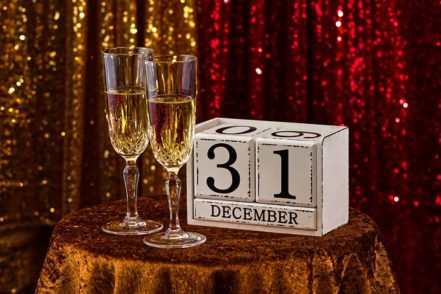
New Year’s Eve
Although some religions have shunned New Year’s Eve celebrations as heathen, it is a natural inclination to mark significant milestones in life. Seeing the passing from one year to the next is one such milestone that appeals to everyone’s sense of personal history and anticipation of what is to come ~ hence our New Year’s resolutions for self-improvement. Ever since the recording of calendars, the start of a new year has been an excuse for a communal pat on the back (party) for having survived the old year.
In the UK, New Year’s Eve was on 24th March until 1752, when we adopted the Gregorian calendar, whereupon it became 31st December. The old system can be seen in the names September, October, November and December having Latin roots meaning seven, eight, nine and ten respectively.
New Year’s Eve is now associated with impressive fireworks displays in London and other major cities across the world, and parties at which there is a countdown to midnight. There is then the singing of ‘Auld Lang Syne’, a midnight kiss (for good luck), and sometimes the quaffing of champagne. Many people watch Jools’ Annual Hootenanny on BBC2, which has provided a two-hour televised concert party since 2006.
(Image: Alexas_Fotos at pixabay.com)
